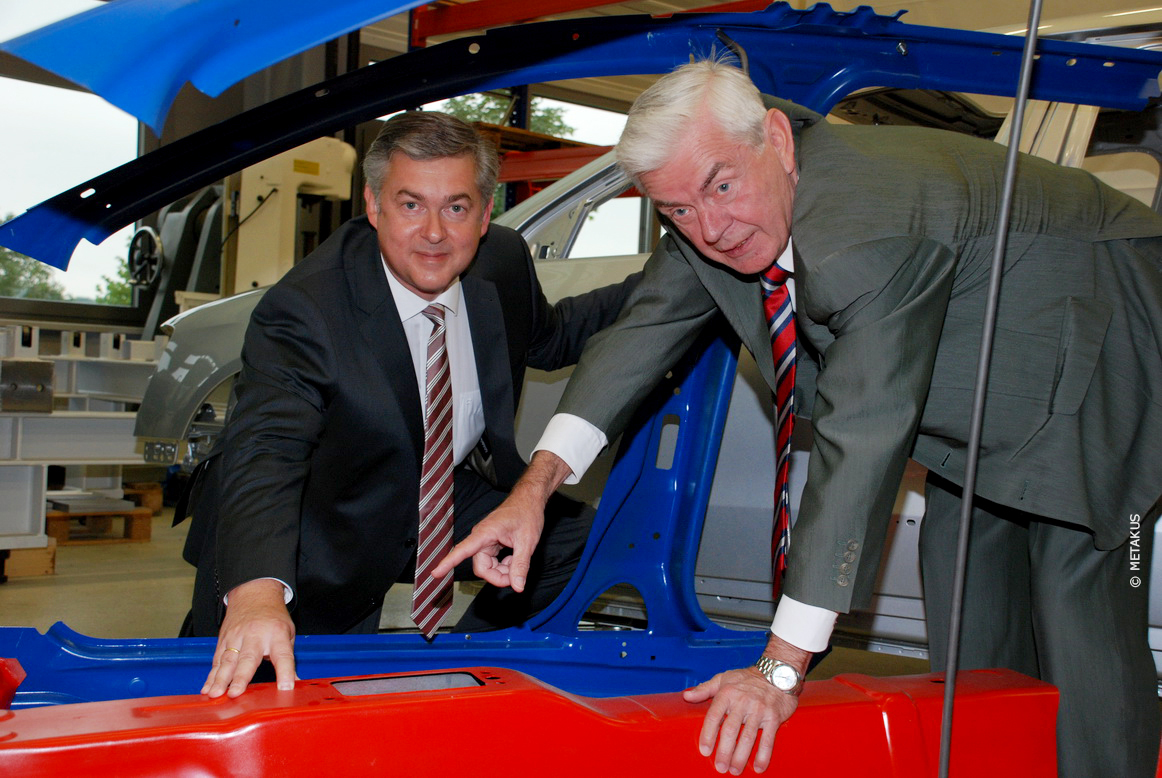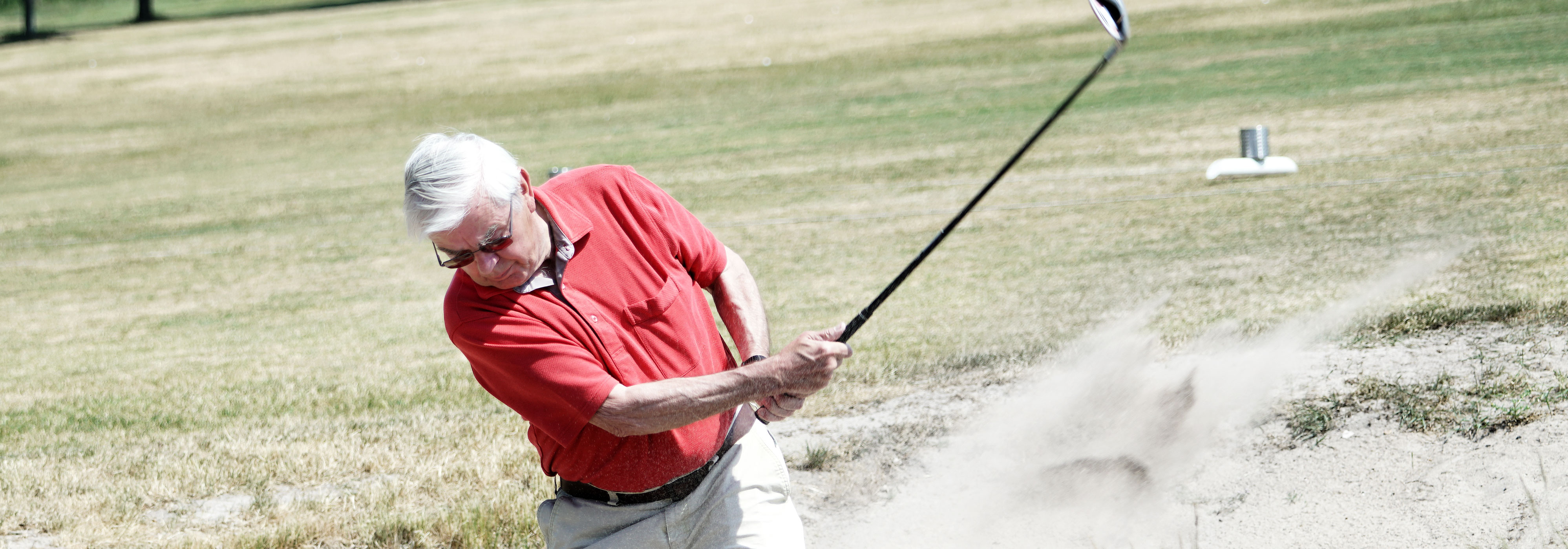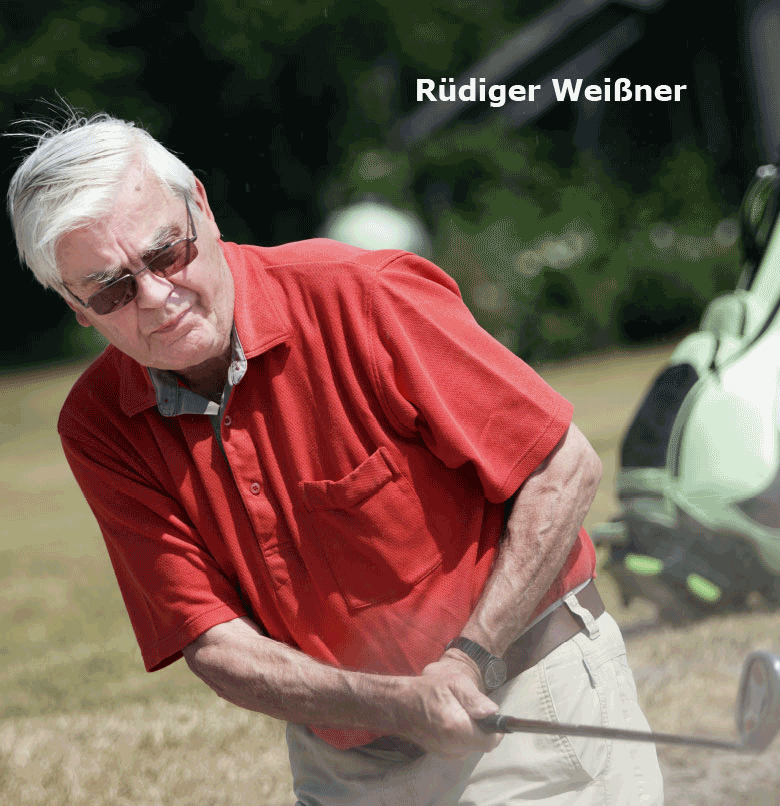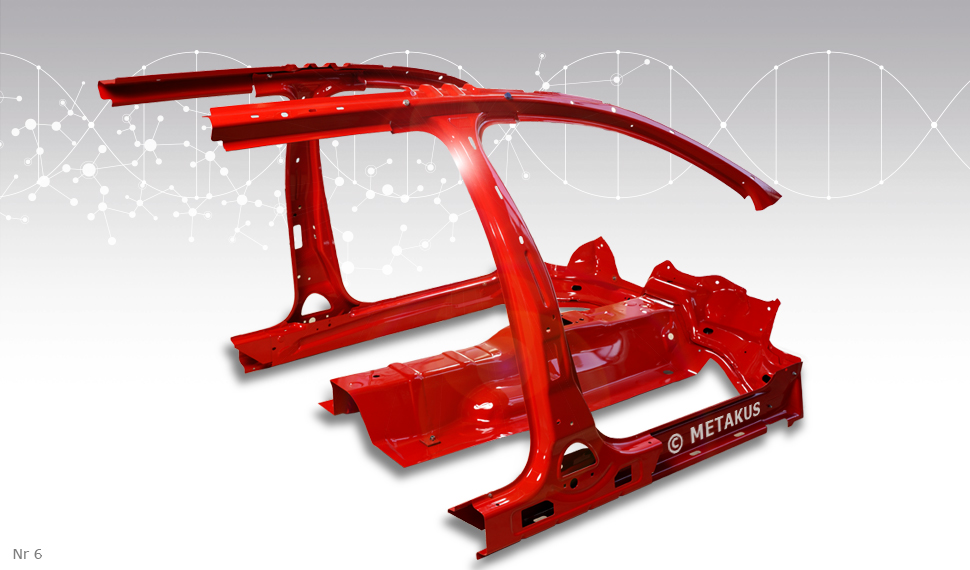EMBARKING INTO A SAFE FUTURE
This was the first time in the history of car body manufacture that such highly complex geometric and ultra-high strength components were manufactured using press hardening in large series production and were installed into vehicles.
2004: Launch of 1st ultra-high strength „safety cage“-type passenger cell design of the Volkswagen model „Passat“. Press hardening has been successfully implemented for large scale series production at Volkswagen Kassel. Nr 1 © Christina Czybik/VWPics / Alamy Stock Foto Nr 2 © Christina Czybik/VWPics / Alamy Stock Foto Nr 6 © METAKUS / Foto: Mario Zgoll
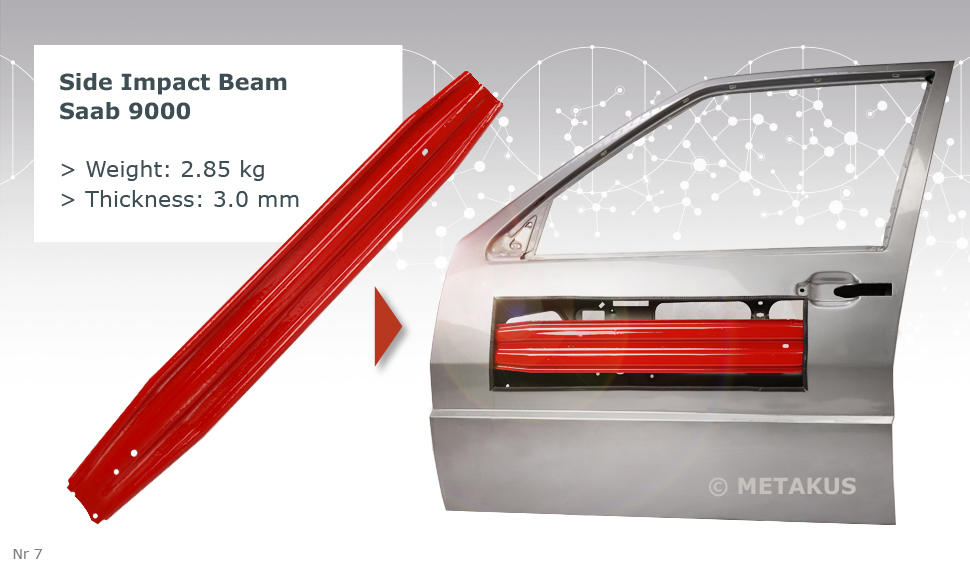
SAFETY FROM THE START
Press hardening technology has essentially been known of since the beginning of the 70s of the last century. Press hardened structural components were first used in car body construction in the mid-80s. However, at this point in time, the main and only goal was to find a solution for the safety requirements for passengers that had risen. The result was to incorporate single reinforcement components having a simple profile-type shape with the main task of increasing the intrusion safety in the case of a side impact. However, these components were anything but light.
STEEL – ANYTHING BUT A HEAVYWEIGHT
Owing to the awareness that the protection of the environment and climate that has grown dramatically since the 90s also and especially requires radical measures regarding individual transportation, demands for efficient lightweight construction for passenger cars have becoming increasingly louder over time. The fact that steel would play a major role, even if a significantly downsized role in terms of its weight, seemed unavoidable due to its economic and technical potential.
The central criterion for lightweight construction was and remains an ideally high intrinsic load capacity induced by the establishment of the highest material strengths.
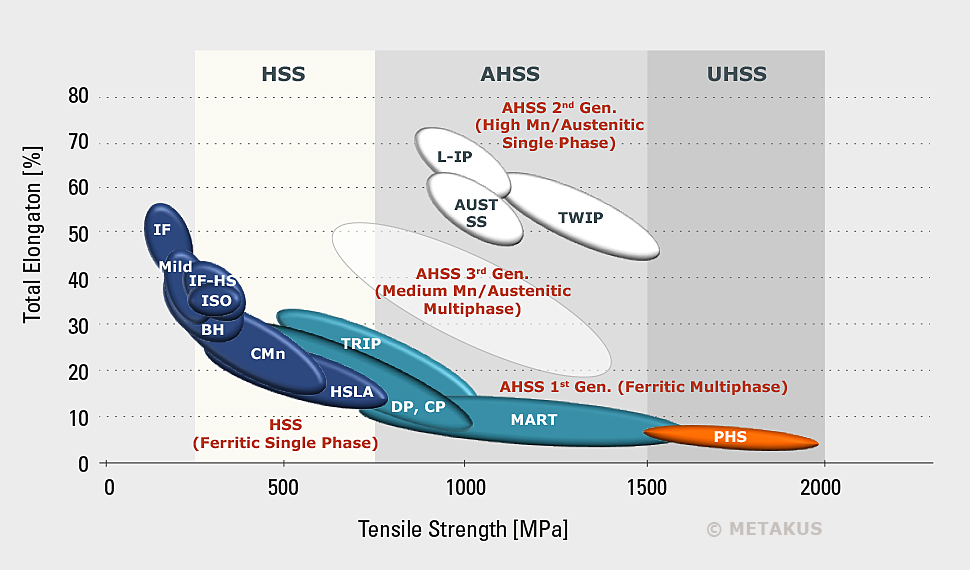
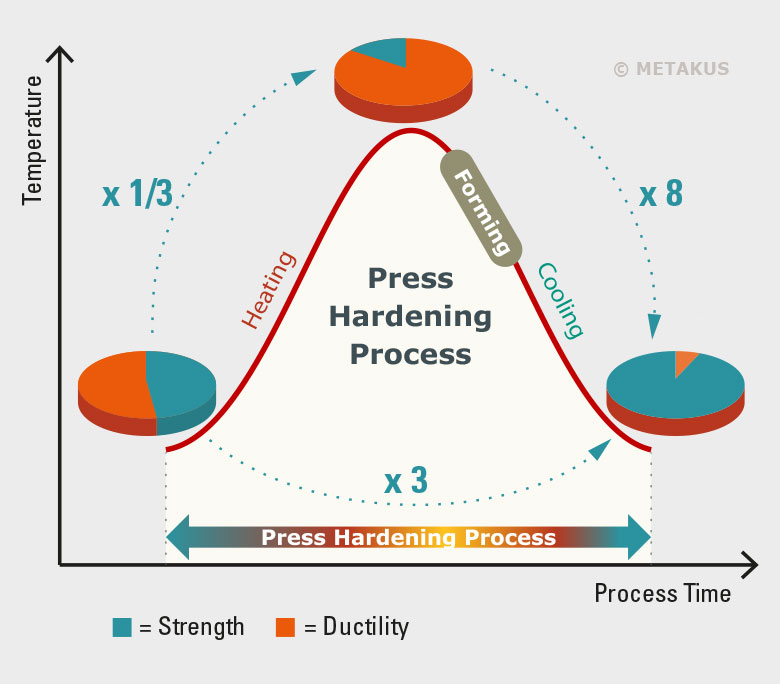
HEAT – THE KEY TO HIGHEST STRENGTHS
When aiming to achieve such high strengths, the selection of available steels limits itself to those of such qualities that enable it to develop its properties once a specific heat treatment has been applied.
This is precisely the group of steels that press hardening addresses. Here, the key feature is that embedding the shaping in to the temperature-time cycle of hardening not only achieves the highest strengths, but enables exceedingly complex component geometries with comparably low forming forces to be set in one processing step.
The passenger compartment of the Passat built in series with press-hardened components starting in 2004 represents a never before achieved lightweight construction dimension coupled with the highest level of safety.
A MILESTONE IN LIGHTWEIGHT AUTOMOBILE CONSTRUCTION
Professor Weißner has no doubts that the successful implementation of press hardening in large series manufacture at Volkswagen AG would have been unthinkable without the significant innovation and support from Professor Steinhoff and his team. In retrospect, this represents a milestone for future design and manufacture of lightweight structural components for automobile construction.
The seed of today’s METAKUS Automotive was already planted in 2007 when the foundation was laid for the technology center in Kassel that bears the same name. Professor Weißner was the manager of this center for many years after entering into retirement. Here, the essential components of the genetic code of press hardening have been under the scientific direction of Professor Steinhoff for much longer than a decade.
